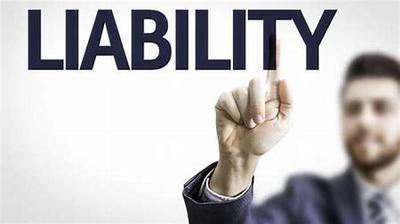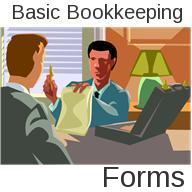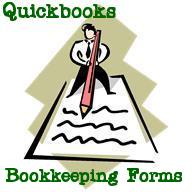- Home
- Questions and Answers
- Understated Liabilities
Comments for Credit Cards Liability Bookkeeping Question
|
||
|
||
Estimated Liability
by Pearl
(Tortola, BVI)
Pearl Co. has consistently used the percentage of completion method of recognizing income, last year Pearl started work on a $4,500,000 construction contract, which was completed this year. The accounting records disclose data for last year:
Progress billing...............1,650,000
Costs incurred.................1,350,000
Collections....................1,050,000
Estimated cost to complete.....2,700,000
How much income should Pearl have recognize on this contract last year.
Please show me how to calculate this problem.
Journal Entry For a Vendor
by Ana Aquino
(Prince George, BC, Canada)
Dear Bookkeeping Professionals,
I am doing bookkeeping for an independent agent that works at a gas station. Her company signed up with British Columbia Lottery Corporation and I am having a hard time entering in their invoice sales slips. Can you help? Or, should I ask somewheres else?
Hi there. I'm hoping I can help, but will need more information. What kind of software are you using? What kind of problem are you having with entering the invoice sales slips?
Liability Setup and Elimination
A liability needs to be established thru payroll for the purchase of a protective vest for a new employee. Once they have now worked here for over a month, they no longer have to reimburse us for the purchase of the protective vest. What accounts should be debited and credited to set up and to eliminate this liability?
New Credit Card Rules
Do you have any information on the new credit card rules taking effect?
Hello,
Thank you for your question.
Some of the provisions of the new credit-card law will actually go into effect this month. So, let's discuss what the rules are and what changes the credit-card companies have been making since the law was signed.
The Credit Card Accountability, Responsibility and Disclosure Act of 2009, signed on May 22, will limit credit-card issuers' ability to raise rates. It will also require them to provide better disclosure of their rules and fees, and it will eliminate some misleading practices. Most of the provisions don't take effect until February 22, 2010. However, some become effective on August 20.
For example:
Card issuers must give 45 days' notice before increasing your annual percentage rate or changing any significant terms of the credit agreement (15 days is the current standard).
And issuers must mail statements to you at least 21 days before the payment is due.
These new disclosure requirements are more timely as card companies are in the midst of making some big changes in anticipation of the new law. So take special care to review any letters your card company sends.
Since the law passed, several different card companies have been reducing credit limits, raising rates, increasing fees, boosting minimum payments and dropping customers with high balances. They've also been altering their balance-transfer offers.
One provision that will take effect on February 22 specifies that card companies must apply any payment you make above the minimum to your highest-rate balance first - so people who have a 0% balance transfer and an 11.99% rate on new purchases will no longer be stuck paying off the 0% balance while interest on the balance at 11.99% continues to accrue.
However, some card companies are taking some of the shine away from balance-transfer offers. Soon after the new credit-card law was passed, Bank of America boosted its balance-transfer fee to 4%, and Chase increased its fee to 5% on some of its cards.
It was also found that 0% balance-transfer offers are becoming harder to find -- especially if you don't have an excellent credit score -- and the period that rate is available is shrinking from 12 months to six. In addition, some card companies are offering 2.5% to 3.5% rates for transfers, instead of charging 0%.
Due to these changes, it is important to review the rules and fees and calculate your potential savings before making a move. A balance-transfer offer that looked good in the past may not be worthwhile if you have to pay a high fee - even if the new credit-card laws make it easier to take advantage of the lower rate.
Comments for New Credit Card Rules
|
||
|
||
New Company Loan
by Glenda
(Canada)
We recently took out a new loan. Each month I record the payment as CREDIT - Bank and DEBIT - Loan Payment Expense.
I have not set up the loan as a liability yet. What is the journal entry for that? I am thinking it is CREDIT - Loan (liability) & DEBIT Company Vehicle (asset).
Also, how do you account for the amount paid off each year end as the loan will have a reduced outstanding balance?
Hello Glenda,
Thank you for your question.
Yes, the journal entry for setting up the loan would be:
DEBIT - Company Vehicle (Asset)
CREDIT - Loan Payable (Liability)
As you are recording each payment to Loan Payment Expense each month as follows:
DEBIT - Loan Payment Expense
CREDIT - Bank
Your journal entry at the end of the year to match to the outstanding balance would be:
DEBIT - Loan Payable (Liability)
CREDIT - Loan Payment Expense
The difference left over in Loan Payment Expense should be the deductible interest portion of the payments.
Great question!
Payment by Credit cards and Service Fees
by Lucy
(Victoria BC)
How do I record the service fees for credit card payments?
Hello Lucy,
Thank you for your inquiry.
I'm not sure if I am interpreting your question correctly, so I have included multiple answers below depending upon whether or not you are receiving or being charged for the service fees.
Please let me know if I helped answer your question. :)
1) Service fees that you charged to and received from a customer for credit card payments that you received are typically recorded as Service Fee Income.
2) Service fees that you were charged for by the credit card company for credit card payments that you received are typically recorded as Merchant Service Fees (expense account).
3) Service fees that your credit card company charges you for making purchases on your credit card are typically recorded as Finance Charges (expense account).
Question about not recieving an invoice
I am a Jr. High football coach at a school in Tennessee. I had a P.O. pulled for some equipment I ordered back in June. Most of the equipment has been shipped and in my possession however we still havent gotten an invoice and it is mid August now. The bookkeeper is worried shes gonna get in trouble. Do buisnesses usually send an invoice before all the order has been shipped? Will our bookkeeper get in trouble over an invoice that hasnt been sent yet? Please help.
Hello,
Thank you for your inquiry.
Many companies will send an invoice for the equipment already shipped simply because they will want to get payment as soon as possible. I don't think your bookkeeper needs to worry about getting in trouble for an invoice that hasn't been received within 90 days, but it would be a good idea to give the vendor a call just to make sure the invoice wasn't lost in transit. :)
Recording Liabilities: PO Date vs Invoice Date
Greetings - I was wondering when (exact date) I should record a liability on the books for a large dollar purchase/item.
We're using purchase orders so the question is; do I record the liability on the PO date, the date the item is physically received, shipping date, or on the invoice date?
We're mainly concerned with how this affects the Financial Statements (and of course following the Uniform Commercial Code and GAAP). We're a non-profit, 501 (c) (3).
Thanks for any help/guidance!
Hello,
Thank you for your question.
The answer is dependent upon whether the business is cash or accrual basis.
If it is cash basis, transactions are recorded when amounts are either received or paid out. (Rather than on transactions for which money may actually change hands later).
If it is accrual basis, transactions are recorded when earned and expenses when incurred.
Reissuing Checks to Vendors
by Jean
(Florida)
A vendor lost the check I sent him and wants me to reissue the check. He's willing to pay for the stop payment charges on the first check and give me an additional discount on the invoice.
The invoice is for $2,200, the bank charge for stop payment is $35 and the additional discount he's offering is $50.
How do I enter this transaction in double entry bookkeeping? What accounts should I use, and which ones should be debited and which ones should be credited?
Thanks for your help.
Hello Jean,
Thank you for your question.
The entries should be as follows:
JE for initial transaction:
DR PURCHASES 2200
CR A/P 2200
JE for check issued
DR A/P 2200
CR CASH 2200
JE for stop payment on check
DR CASH 2200
CR A/P 2200
DR BANK CHARGE 35
CR CASH 35
JE for vendor payment of bank charges and additional discount on invoice
DR A/P 35
CR BANK CHARGE 35
DR A/P 50
CR PURCHASE DISCOUNTS 50
JE for re-issued check
DR A/P 2115
CR CASH 2115
Thanks again for your great question!
Taxes on $11,000
by Jack
(moncton nb canada)
If i made 11,000 dollars last year how much taxes would i have had to have paid to get money back?
Hello Jack,
Thank you for your question.
On a U.S. Federal Tax Return:
If you made $11,000 and filed as Single claiming your 1 exemption your tax return would show:
AGI $11,000
Less Standard Deduction (Single) -5,450
Less 1 Exemption -3,500
Equals Total Taxable Income of $2,050
With Total Tax Liability of $206
Offset by Earned Income Credit of -142
Equals Total Tax Liability of $64
This means that you would need to pay in at least $65 in taxes to get any money back.
Understated Liabilities
by Peggy McGreal
(60130)
Credit Card Liabilities are present at year end, but not shown as outstanding liability on financial statements.
How do I correct to show beginning balances on outstanding credit card liabilitites at beginning of new year
Please subscribe to my monthly newsletter, Bookkeeping Basics E-zine. It tells you every month about the new information that I have added, including some great tips and advice from myself and other Bookkeeping Basics readers.
Like Bookkeeping-Basics.net?
- Home
- Questions and Answers
- Understated Liabilities













